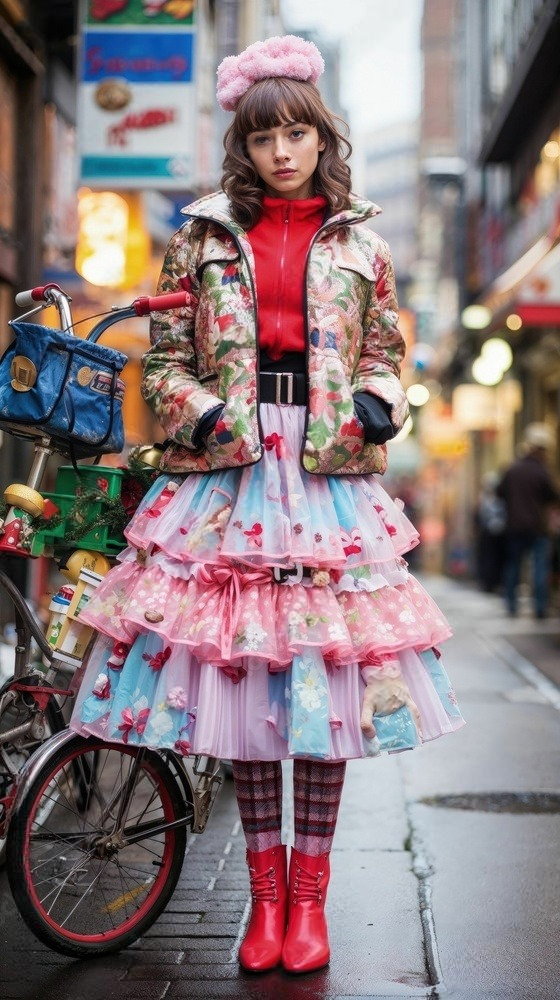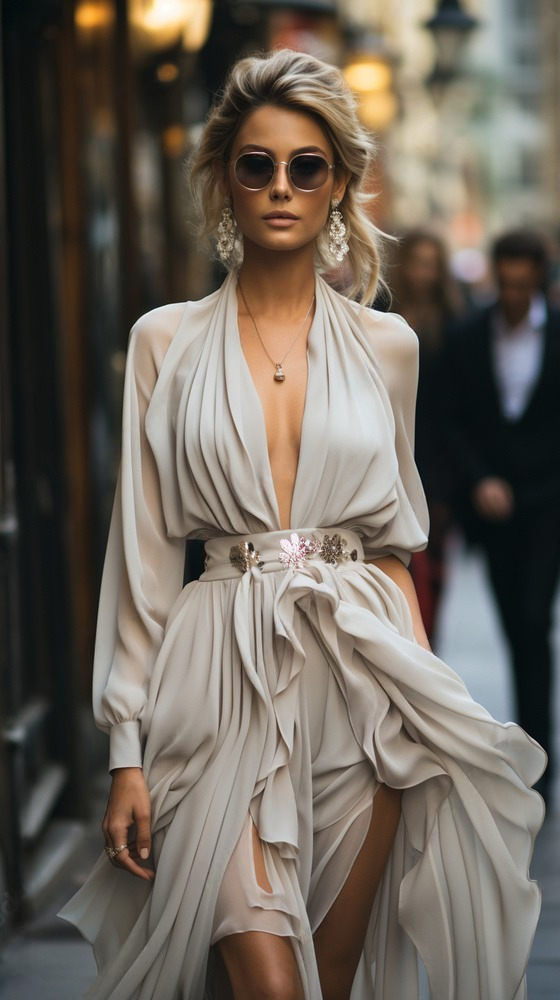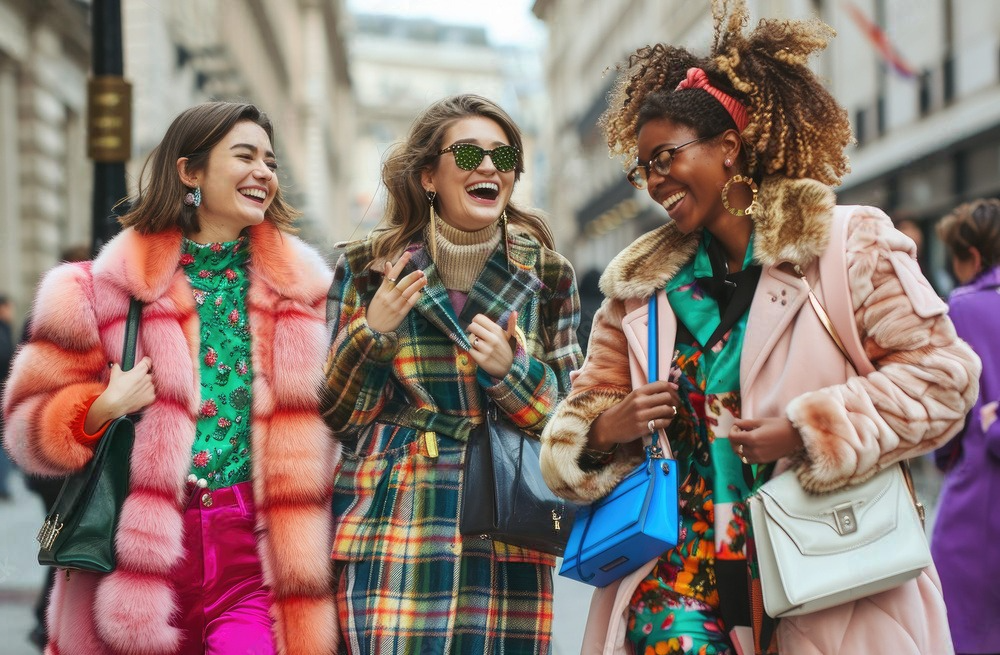Fashion isn’t just about following trends; it’s about expressing your individuality and personality. One of the most dynamic and diverse forms of fashion is street style. It’s raw, authentic, and constantly evolving. If you’re looking to stand out from the crowd and make a statement with your wardrobe, mastering street fashion style is the way to go.
In our earlier piece titled “Street Fashion Style Breakthrough 101: Embracing Individuality and Urban Expression,” we explored the concept of street fashion, including its roots, development, and current trends. This article delves into street fashion influencers, the global embrace of this style, its influence on mainstream fashion, and the sustainability aspects of streetwear culture.
Table of Contents
Trailblazing Street Fashion Style Influencers: Shaping Style and Culture
Street fashion style influencers play a pivotal role in shaping contemporary style narratives, setting trends, and inspiring fashion enthusiasts around the globe. With their unique sense of style, creativity, and influential platforms, these individuals have become tastemakers and trendsetters in the ever-evolving landscape of street fashion. Let’s explore some of the trailblazing street fashion style influencers who have left an indelible mark on the industry.
Aimee Song(@aimeesong):
Aimee Song is a powerhouse in the world of street fashion style, known for her effortlessly chic style and keen eye for trends. With over 5 million followers on Instagram and a successful blog, Song of Style, she has become a go-to source for fashion inspiration and lifestyle content. Aimee’s eclectic mix of high and low fashion, paired with her signature California cool aesthetic, has solidified her status as one of the most influential figures in the industry.
Chiara Ferragni(@chiaraferragni):
Chiara Ferragni is a fashion icon and entrepreneur who rose to fame through her wildly popular blog, The Blonde Salad. With over 23 million followers on Instagram and a successful fashion empire, including her own clothing line and footwear brand, Chiara has become a global sensation in the world of street fashion. Her eclectic style, bold fashion choices, and glamorous lifestyle have made her a sought-after influencer and trendsetter.
Bryanboy(@bryanboy):
Bryanboy is a pioneering figure in the world of street fashion blogging, known for his fearless approach to style and larger-than-life personality. With his flamboyant outfits, quirky accessories, and irreverent sense of humor, Bryanboy has carved out a niche for himself as one of the most distinctive voices in the industry. His influence extends beyond fashion, with collaborations with major brands and appearances in magazines and television shows.
Irene Kim(@ireneisgood):
Irene Kim is a South Korean model, television personality, and street style icon known for her bold and colorful fashion choices. With her vibrant hair colors, playful ensembles, and infectious energy, Irene has captured the hearts of fashion enthusiasts around the world. She has worked with top brands like Chanel, Dior, and Calvin Klein, solidifying her status as a leading influencer in the global fashion scene.
Adam Gallagher(@iamgalla):
Adam Gallagher is a menswear influencer and style blogger known for his sophisticated yet accessible approach to street fashion. With his impeccably tailored suits, rugged denim looks, and effortlessly cool, Adam has amassed a loyal following of over 2 million followers on Instagram. He has collaborated with a wide range of fashion brands and has been featured in publications like GQ and Vogue, cementing his status as a leading authority on men’s style.
Leandra Medine Cohen (@leandramcohen):
Leandra Medine Cohen, also known as the founder of the popular fashion blog Man Repeller, is a pioneering figure in the world of street fashion. With her witty commentary, fearless fashion choices, and unapologetic approach to style, Leandra has challenged conventional notions of beauty and femininity. Her influence extends beyond fashion, with her platform advocating for inclusivity, self-expression, and empowerment.
Exploring Street Fashion Style Around the World: A Global Tapestry of Style
Street fashion style is a vibrant and diverse expression of cultural identity, creativity, and self-expression that varies from city to city and country to country. From the eclectic streets of Tokyo to the cosmopolitan boulevards of Paris, each corner of the globe boasts its unique sartorial tapestry that reflects the intersection of tradition, modernity, and individuality.
1. Tokyo, Japan:
Known for its avant-garde fashion and cutting-edge style, Tokyo is a mecca for street fashion style enthusiasts. The city’s Harajuku district is famous for its colorful and eclectic street style, where fashion tribes like the Harajuku girls and cosplay enthusiasts converge to showcase their bold and experimental looks. From quirky accessories and vibrant prints to innovative layering and futuristic silhouettes, Tokyo street fashion is a celebration of creativity and individuality.

2. London, United Kingdom:
London is renowned for its eclectic mix of high fashion and street style, with its diverse population and vibrant cultural scene influencing the city’s sartorial landscape. From the trendy streets of Shoreditch to the upscale boutiques of Mayfair, Londoners embrace a diverse range of styles, from punk-inspired ensembles and vintage finds to tailored classics and avant-garde couture. The city’s fashion-forward attitude and embrace of diversity make it a melting pot of creativity and innovation.

3. Paris, France:
As the capital of fashion, Paris exudes an air of elegance, sophistication, and timeless style that permeates its street fashion scene. From the chic boulevards of the Marais to the historic cobblestone streets of Saint-Germain-des-Prés, Parisians effortlessly blend classic elegance with contemporary flair. Tailored coats, structured blazers, and statement accessories are hallmarks of Parisian street style, reflecting the city’s rich fashion heritage and effortless chic.

4. Seoul, South Korea:
Seoul has emerged as a global fashion capital, known for its trendsetting street style and innovative approach to fashion. The city’s youth-driven culture and obsession with beauty and aesthetics have propelled it to the forefront of the global fashion scene. From the trendy districts of Gangnam and Hongdae to the bustling markets of Myeongdong, Seoulites embrace a mix of streetwear, K-pop-inspired looks, and high-fashion pieces, creating a dynamic and eclectic fashion landscape.

5. New York City, United States:
New York City is a melting pot of cultures, styles, and influences, making it a fertile ground for diverse and dynamic street fashion. From the hipster enclaves of Brooklyn to the chic streets of Manhattan, New Yorkers embrace a range of styles, from edgy urban looks and vintage-inspired outfits to polished corporate attire and athleisure wear. The city’s fast-paced energy and cultural diversity inspire constant innovation and reinvention in the world of street fashion.

6. São Paulo, Brazil:
São Paulo is a vibrant and eclectic metropolis known for its colorful street art, lively music scene, and dynamic street fashion. The city’s residents, known as Paulistanos, embrace a mix of casual and chic styles, blending traditional Brazilian elements with contemporary trends. From the bohemian vibes of Vila Madalena to the upscale boutiques of Jardins, São Paulo’s street fashion scene reflects the city’s diverse cultural influences and vibrant spirit.

The Transformative Influence of Street Fashion on Mainstream Trends
Street fashion has long been a driving force behind mainstream fashion trends, shaping the way we dress, express ourselves, and interact with clothing. What starts as a grassroots movement among subcultures and urban communities often finds its way onto the runways, into fashion magazines, and onto the racks of retail stores, ultimately influencing the broader fashion landscape.

Creative Expression and Individuality:
Street fashion celebrates individuality, creativity, and self-expression, offering a platform for individuals to showcase their unique style and personality. The diverse array of styles, influences, and subcultures represented in street fashion inspires designers and tastemakers to embrace diversity and push the boundaries of conventional fashion norms. As a result, mainstream fashion has become more inclusive and diverse, reflecting a wider range of tastes, preferences, and identities.
Trendspotting and Trendsetting:
Street fashion serves as a fertile ground for trendpotting and trendsetting, with fashion enthusiasts around the world constantly innovating and experimenting with new styles, silhouettes, and aesthetics. What emerges as a popular street style trend—whether it’s oversized hoodies, statement sneakers, or bold prints—often catches the attention of designers, stylists, and fashion editors, who incorporate these elements into their collections and editorial spreads. As a result, street fashion becomes a source of inspiration and innovation for mainstream fashion, driving trends and shaping the fashion zeitgeist.
Influence of Subcultures and Urban Communities:
Street fashion is deeply rooted in the cultural identities, subcultures, and urban communities from which it originates. Subcultures like punk, hip-hop, skateboarding, and rave culture have all made significant contributions to street fashion, introducing distinct styles, symbols, and aesthetics that have resonated with mainstream audiences. As these subcultures gain visibility and influence, their fashion codes and symbols become assimilated into mainstream fashion, enriching the fashion landscape with their unique perspectives and voices.
Democratization of Fashion:
Street fashion has played a key role in democratizing fashion, making style accessible and inclusive to a wider audience. Social media platforms like Instagram, TikTok, and YouTube have empowered fashion enthusiasts to share their personal style and fashion discoveries with a global audience, bypassing traditional gatekeepers and democratizing the fashion discourse. As a result, mainstream fashion has become more responsive to the needs and preferences of consumers, with brands and designers embracing a more diverse and inclusive approach to fashion.
Blurring of High and Low Fashion:
Street fashion has blurred the boundaries between high fashion and street style, challenging traditional notions of luxury and exclusivity. What was once considered “lowbrow” or “alternative” has become highly coveted by luxury brands and fashion houses, leading to collaborations, capsule collections, and streetwear-inspired designs that bridge the gap between high and low fashion. This convergence of high and low culture has democratized access to fashion and reshaped the way we perceive style and luxury.
Embracing Sustainability in Street Fashion Style: A Call for Conscious Consumption
Street fashion, with its dynamic and ever-evolving nature, is increasingly embracing sustainability as a guiding principle. As awareness grows about the environmental and social impact of fashion, streetwear enthusiasts, brands, and designers are reimagining their approach to style, prioritizing eco-friendly materials, ethical production practices, and conscious consumption. Let’s explore the emerging trend of sustainability in street fashion and its implications for the future of the industry.

1. Sustainable Materials:
One of the key pillars of sustainable street fashion is the use of eco-friendly materials that minimize harm to the environment. Brands and designers are increasingly turning to organic cotton, recycled polyester, hemp, and Tencel, among other sustainable fabrics, to create clothing and accessories with a lower carbon footprint. By prioritizing materials that are grown, harvested, and produced in an environmentally responsible manner, streetwear labels are reducing their impact on the planet and promoting a more sustainable fashion ecosystem.
2. Ethical Production Practices:
In addition to using sustainable materials, streetwear brands are also embracing ethical production practices that prioritize fair labor conditions, worker rights, and social responsibility. By partnering with ethical factories and suppliers, brands can ensure that their garments are made in safe and humane working environments, with fair wages and labor standards upheld throughout the supply chain. Transparency and accountability are key principles guiding the shift towards ethical production in street fashion, as consumers demand greater visibility into the origins of their clothing and the impact of their purchases.
3. Circular Fashion:
The concept of circular fashion is gaining traction in the streetwear community, offering a sustainable alternative to the traditional linear model of production and consumption. Brands are exploring innovative solutions such as clothing rental, resale platforms, and garment recycling programs to extend the lifespan of their products and minimize waste. By embracing circularity, streetwear enthusiasts can enjoy the latest trends without contributing to the cycle of overconsumption and textile waste, ultimately reducing the industry’s environmental footprint.
4. Slow Fashion Movement:
As an antidote to fast fashion’s disposable culture, the slow fashion movement is gaining momentum in the streetwear scene, promoting a more mindful and intentional approach to style. Rather than chasing fleeting trends and constantly updating their wardrobes, consumers are encouraged to invest in timeless pieces that are well-made, versatile, and designed to last. Slow fashion emphasizes quality over quantity, encouraging individuals to build a curated wardrobe of essentials that reflect their style and values.
5. Community Engagement and Education:
Sustainability in street fashion is not just about the products—it’s also about fostering a sense of community and empowering consumers to make informed choices. Brands and influencers are leveraging their platforms to educate their audience about sustainability issues, raise awareness about ethical fashion practices, and advocate for positive change within the industry. By engaging with their community and promoting dialogue around sustainability, streetwear brands can inspire meaningful action and drive systemic change.
2024 Street Fashion Style: Trends That Are Taking Over the Pavement
In the fast-paced world of fashion, trends come and go, but street fashion remains a timeless expression of individuality and style. As we step into 2024, street fashion continues to evolve, reflecting not only the latest trends but also a growing emphasis on sustainability and inclusivity.

Embracing Diversity: Beyond the Mainstream
One of the defining characteristics of street fashion in 2024 is its celebration of diversity. No longer confined to traditional norms, street fashion embraces individuals of all backgrounds, genders, and identities. From gender-neutral clothing to cultural fusion, the streets have become a runway for self-expression and acceptance.
Bold colors, mixed patterns, and eclectic accessories are all part of the tapestry of street fashion, allowing individuals to express their unique personalities without boundaries. In 2024, expect to see a greater emphasis on inclusivity and representation, as designers and brands strive to reflect the diverse tapestry of society.
Digital Influence: From Street to Screen
In an increasingly digital world, the influence of social media and online communities cannot be ignored. Street fashion in 2024 is not only shaped by the streets themselves but also by the digital spaces where trends are born and shared.
Instagram, TikTok, and Pinterest are all powerful platforms for discovering and showcasing street-style inspiration. Influencers and content creators play a significant role in shaping the conversation around street fashion, influencing everything from outfit trends to brand collaborations.
The Rise of Tech-Infused Fashion
As technology continues to advance, street fashion in 2024 is embracing innovation like never before. From wearable tech to digital accessories, tech-infused fashion is blurring the lines between style and functionality.
Smart fabrics that adapt to the environment, AR-enhanced accessories that bring outfits to life, and digital garments that change with a swipe of a screen are just a few examples of the intersection between fashion and technology. In 2024, expect to see a surge in tech-forward streetwear, as designers push the boundaries of what’s possible in the world of fashion.
Street fashion in 2024 is a vibrant tapestry of diversity, sustainability, and innovation. From the streets to the screen, individuals are embracing their unique style identities while championing the causes they believe in. As we look ahead, one thing is clear: street fashion will continue to evolve, reflecting the ever-changing landscape of our world.
Street fashion is more than just clothes; it’s a cultural movement that celebrates diversity, creativity, and self-expression. From its humble beginnings in subcultures to its current status as a global phenomenon, street fashion continues to push boundaries and challenge the status quo.




